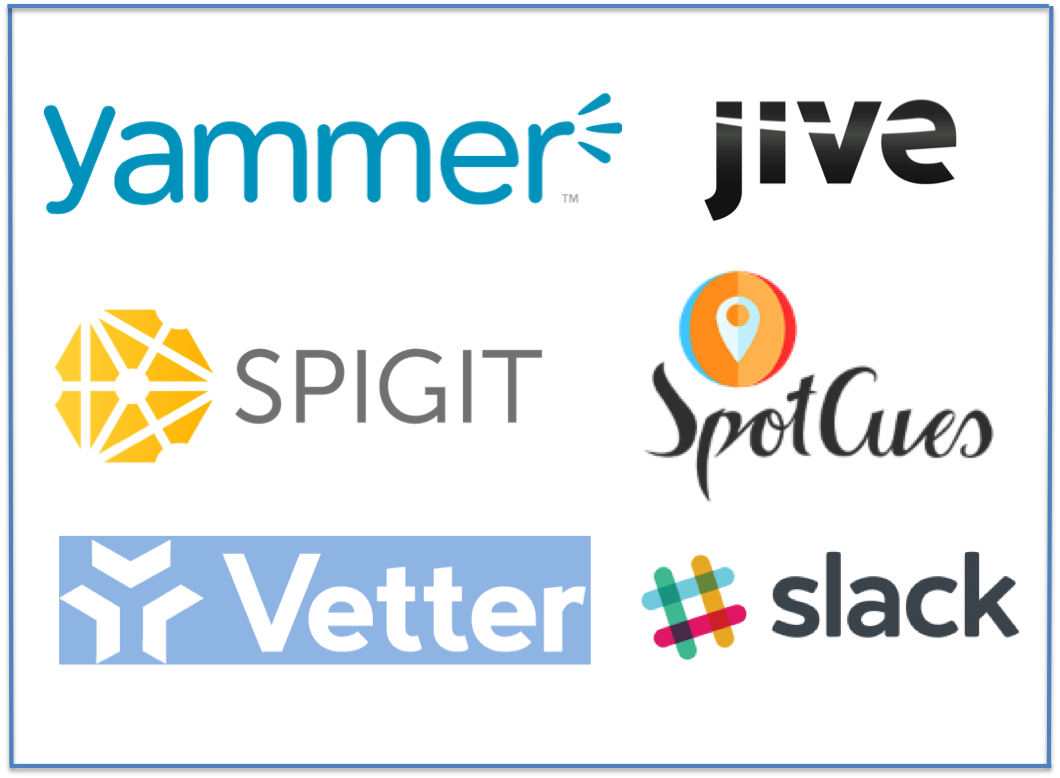Enterprise Social Networks – Connecting Employees And Simplifying Communication

Over the past decade, the rise of social networks has been the most transformational trend in how we communicate. Facebook has changed the way we communicate with friends and family and display our digital selves to the world. Real time social feeds like Twitter, Instagram, and Snapchat have fundamentally altered the way we consume news, opinions, advertising, and everything in between (for better or worse).
As a result of these seismic shifts in personal social communications, companies have been increasingly re-examining how their own employees talk to each other. For years, email has been the standard currency of corporate communications. And to a large extent, it still is. However, this email-centric model has its flaws and drawbacks, chief among them being the sheer volume of messages that many of us need to wade through every day. Enterprise social networks, or ESN’s, have come into existence to address these issues. Building off of the success of personal social networks, ESN’s have been designed to mimic the experience of a personal social network for users, while providing key actionable insights and analytics for company administrators.
In an all too familiar trend for the technology industry, the market for ESN’s has risen rapidly, and seemingly over night. Some of the most well known include Yammer, Slack, and Jive. These popular networks allow employees to use any of their devices to comment, rate, and collaborate within custom designed intranet portals, with a similar newsfeed and stylistic layout as Facebook. There are also a number of features added in to enhance the experience, including instant messaging, surveying, and document sharing. Ultimately, these platforms are intended to act as a more social, collaborative, and real time communication vehicle on top of existing email communications. This has a number of positive effects, including driving more engagement, providing a more appropriate forum for company-wide communications than “mass emails”, and eliminating some traditional email clutter.
The ESN industry is not limited to a few providers. There are hundreds of enterprise social networks, with slight variations in design, functionality and intent. For instance, one sub-set of the ESN market is referred to as “idea management software”. Companies like Spigit, Vetter (https://www.getvetter.com), Ideascale, Planbox, and Hunchbuzz act as a digital suggestion box, where employees can submit ideas or respond to moderated questions. These ideas are then displayed socially, and voted on by the rest of the network. The best ideas are moved into a workflow, allowing users to see in real time how management is incorporating and acting upon their suggestions.
With the wide variety of providers and customizable plans, there is an enterprise social network solution for companies of all sizes and industries. If you are considering incorporating one of these tools into your company’s tool belt, here are a few tips to get you started:
- For any organization choosing an enterprise social network, it is not just about, which tool you select, but how you plan to use it. With so many providers and customizable plans, there is not a “one size fits all” answer.
- The company must complete due diligence in understanding how employees currently communicate and what their appetite is for these type of networks. This will help decide which features and functions are most critical as you narrow down provider options.
- There must be a defined communications plan, and accountable administrators and moderators who will support the ongoing use of the platform. Otherwise, usage will spike at the outset, and drop quickly if users fail to see the significance or relevance.
- The range of platforms available on the market vary widely in terms of complexity, and their impact on the overall dynamics of company-wide communications. For instance, the more complex platforms are designed to overhaul how employees speak to each other, and ultimately eliminate traditional email clutter. Whereas less complex networks might provide simple surveying or instant messaging capabilities.
- Getting influential leaders on board from the start is critical to promote usage and confidence in newly introduced networks.
- Keep it fresh with updates, pose questions, have fun and let the employees take a lead in creating it and taking it social.
This is an exciting time for internal communications, if you have any questions about enterprise social networks, please give us a call.
